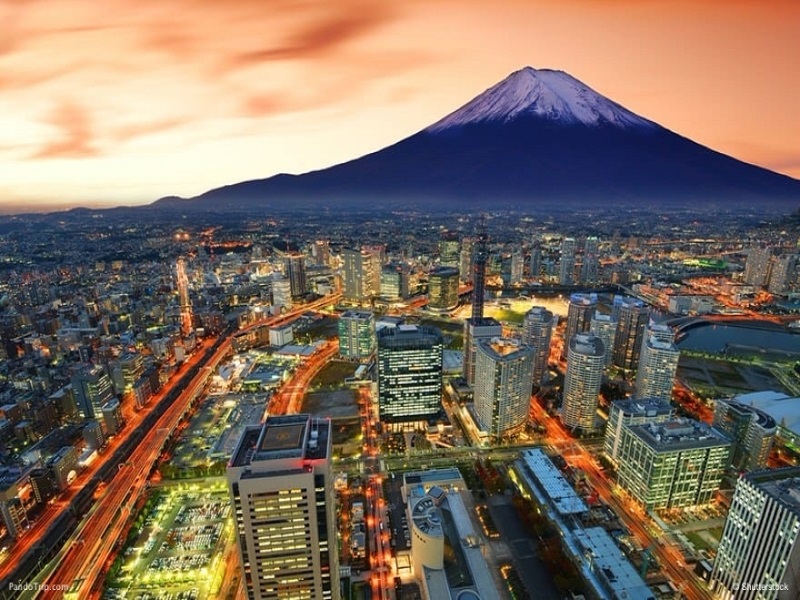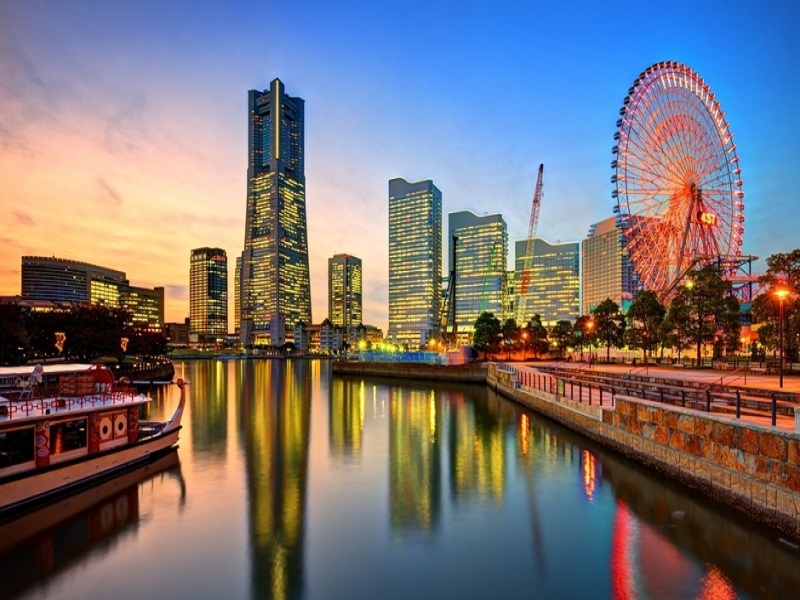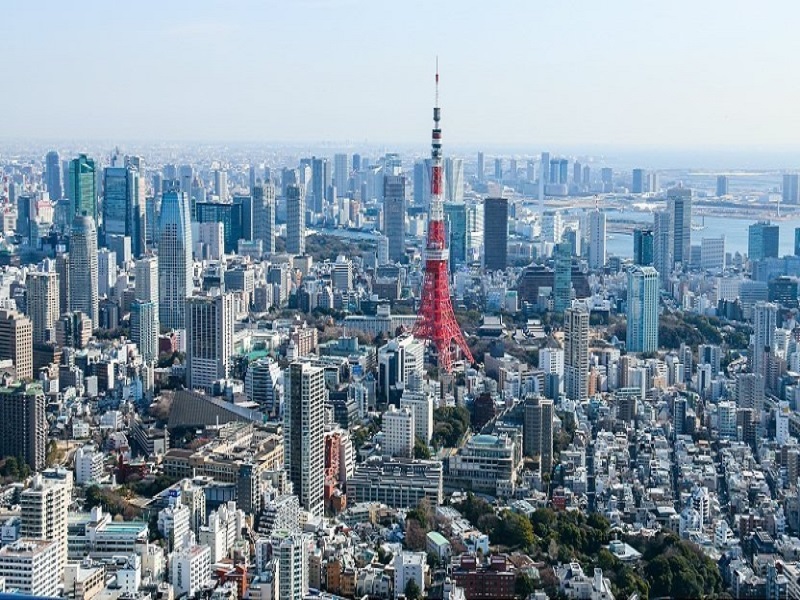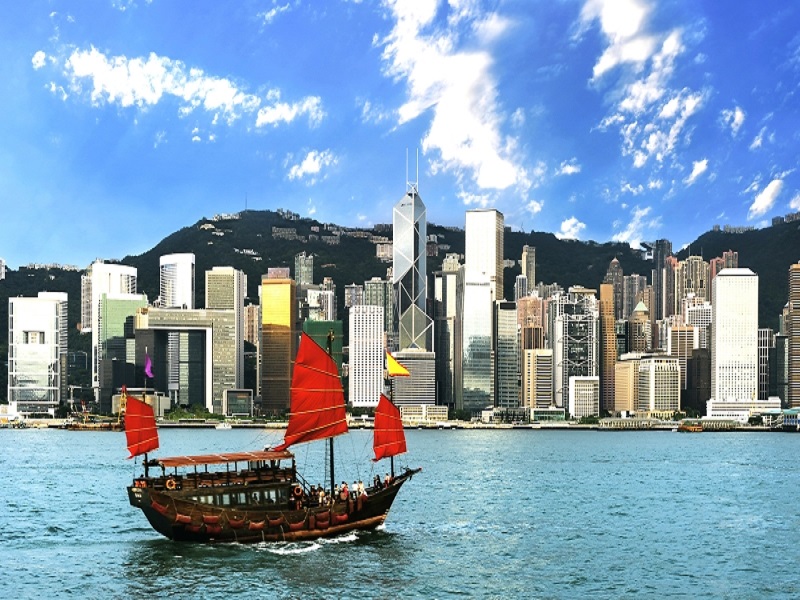Venue & Hospitality
City Highlights
About City
Tokyo, formerly (until 1868) Edo, city and capital of Tokyo to (metropolis) and of Japan. It is located at the head of Tokyo bay on the pacific coast of central Honshu. It is the focus of the vast metropolitan area often called greater Tokyo, the largest urban and industrial agglomeration in Japan. The site of Tokyo has been inhabited since ancient times; the small fishing village of Edo existed there for centuries. Edo’s development into a city did not occur until the Tokugawa period (1603–1867), when it became the capital of the Tokugawa shogunate. During this period, however, the imperial family remained in Kyoto, the ancient imperial capital. With the Meiji restoration of 1868, which ended the shogunate, the capital was moved to Edo. The city was renamed Tokyo, meaning eastern capital. Edo had been Japan’s largest city since the 17th century. Tokyo’s population exceeded one million in the late 19th century, and as Japan’s political, economic, and cultural centre it became one of the world’s most populous cities in the 20th century. The city is built on low, alluvial plains and adjacent upland hills. The climate is mild in winter and hot and humid in the summer. Early summer and early autumn are rainy seasons; two or three typhoons usually occur during September and October. The metropolitan area is the largest industrial, commercial, and financial centre in Japan. Many domestic and international financial institutions and other businesses are headquartered in central Tokyo. The city is an important wholesale centre, where goods from all parts of the country and the world are distributed. Tokyo is part of the Keihin industrial Zone, centred on the western shore of the bay, which has become the country’s leading manufacturing region. Light and labour-intensive industries predominate in the city, notably printing and publishing and the manufacture of electronic equipment.
Top Universities and Institutes at Tokyo Working on Recycling and Waste management
• Department of Urban Engineering, The University of Tokyo, Japan
• Department of Products Engineering and Environmental Management, NIPPON institute of technology, Japan
• Tokyo University of Science, Japan
• Kyoto University, Japan
• Hokkaido University, Japan
• Kyushu University, Japan
• Ritsumeikan University, Japan
• Saga University, Japan
• University of Tsukuba, Japan
• Kitami University of Technology, Japan
Top Tourist Places
1. Odaiba: Accessed via the Rainbow Bridge or the futuristic Yurikamome train, Odaiba is a high-tech entertainment hub on an artificial island in Tokyo Bay. Visitors head to the beach at Seaside Park, enjoy Mt. Fuji views from the Daikanransha Ferris wheel, and interact with robots at the Miraikan science museum. Malls include Aqua City and the Venice-themed Venus Fort, and there are sushi bars with views along the waterfront.
2. Senso Ji: Senso Ji is an ancient Buddhist temple located in Asakusa, Tokyo, Japan. It is Tokyo's oldest temple, and one of its most significant. Formerly associated with the Tendai sect of Buddhism, it became independent after World War II.
3. Tokyo Disney Land: Tokyo Disneyland is a 115-acre theme park at the Tokyo Disney Resort in Urayasu, Chiba Prefecture, Japan, near Tokyo. Its main gate is directly adjacent to both Maihama Station and Tokyo Disneyland Station. It was the first Disney park to be built outside the United States, and it opened on 15 April 1983.
4. Tokyo Sky Tree: Tokyo Sky Tree is a broadcasting, restaurant, and observation tower in Sumida, Tokyo, Japan. It became the tallest structure in Japan in 2010 and reached its full height of 634.0 metres in March 2011.
5. Tokyo Tower: Tokyo Tower is a communications and observation tower in the Shiba-koen district of Minato, Tokyo, Japan. At 332.9 metres, it is the second-tallest structure in Japan. The structure is an Eiffel Tower-inspired lattice tower that is painted white and international orange to comply with air safety regulations.
6. Meiji Shrine: Meiji Shrine, located in Shibuya, Tokyo, is the Shinto shrine that is dedicated to the deified spirits of Emperor Meiji and his wife, Empress Shoken. The shrine does not contain the emperor's grave, which is located at Fushimi-momoyama, south of Kyoto.
How to Get to Tokyo
By Air: Tokyo has two airports: Narita Airport handles most international flights and only a small number of domestic flights. It is located 60 kilometres outside of central Tokyo. The more centrally located Haneda Airport handles a smaller number of international flights and most domestic flights.
By Shinkansen: Most shinkansen lines lead to Tokyo. The trip from Osaka/Kyoto takes about three hours. There are also direct trains to/from Kyushu, Kanazawa, Niigata and various destinations in the Tohoku Region and Hokkaido.
Major JR Train lines in Central Tokyo
• Yamanote Line
Circle line that connects all major city centres.
• Keihin-Tohoku Line
Runs parallel to the Yamanote Line on the eastern half of the circle.
• Chuo/Sobu Line (Local)
Runs across the Yamanote circle (local slow service).
• Chuo Line (Rapid)
Runs across the Yamanote circle (rapid service). Connects Tokyo Station with Shinjuku Station.
• Saikyo Line
Runs parallel to the Yamanote Line on the western half of the circle. From Osaki Station, some trains continue running along the Rinkai Line in direction of Odaiba.
• Shinkansen
Tokaido Shinkansen trains stop at Tokyo and Shinagawa, while bullet trains to the north stop at Tokyo and Ueno.
Subways
Tokyo's subway network is operated by two companies, the Toei Subways with four lines, and Tokyo Metro (formerly known as Eidan Subways) with nine lines. Together, they densely cover central Tokyo, especially the area inside the Yamanote circle and the areas around Ginza and the area east of the loop line. Note, that at their terminal stations, the trains of some subway lines continue to operate on the tracks of different companies on suburban train lines. For example, the Chiyoda Subway Line is directly connected with the suburban Odakyu Line at Yoyogi-Uehara Station, and trains on the Fukutoshin Subway Line continue to run on the tracks of the Tokyu Toyoko Line at Shibuya Station.
Other Railway Companies
Besides JR East and the two subway companies, most other railway companies connect Tokyo with the metropolis' outer regions and surrounding prefectures. Their lines typically start at one of the stations of the JR Yamanote Line. Many of the private railway companies also operate department stores usually at their train lines' major stations.
• Tokyu Railway
Serving southwestern Tokyo and Kanagawa
• Tobu Railway
Serving Saitama and Tochigi, including Nikko
• Seibu Railway
Serving the Tokyo Tama Region and Saitama
• Keio Railway
Serving the Tokyo Tama Region
• Odakyu Railway
Serving Kanagawa, including Hakone
• Keisei Railway
Serving Chiba, including Narita Airport
• Keikyu Railway
Serving Kanagawa, including Haneda Airport
• Tsukuba Express
Connecting Akihabara with Tsukuba City, Ibaraki
Venue
Hotel Ana Crowne Plaza, 68, Horinouchi, Narita, Chiba 286-0107, Japan





